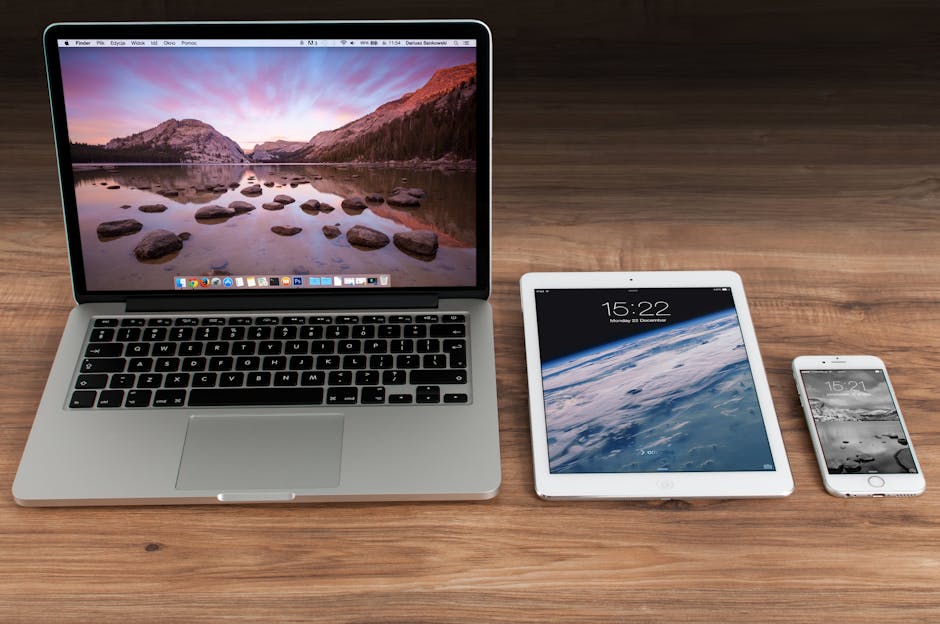If you’re wondering how to install Chrome on your computer or mobile device, this guide will provide you with a complete walkthrough. Google Chrome is a popular web browser known for its speed, security, and extensive library of extensions. Let’s get started with the installation process.
Downloading Chrome for Your Operating System
The first step in installing Chrome is to download the correct installation file for your operating system. Chrome is available for Windows, macOS, Linux, Android, and iOS. Visit the official Google Chrome download page to get started.
For Windows: The website will automatically detect your Windows version (e.g., Windows 10, Windows 11). Click the “Download Chrome” button. For macOS: Similar to Windows, the site will detect your macOS version. Click “Download Chrome for Mac.” For Linux: You’ll be presented with options for different Linux distributions (Debian/Ubuntu, Fedora/openSUSE). Choose the appropriate package for your system. For Android: Chrome is usually pre-installed on Android devices. If not, you can download it from the Google Play Store. For iOS: Download Chrome from the Apple App Store.
Installing Chrome on Windows
Once you have downloaded the Chrome installer for Windows, follow these steps:
- Locate the downloaded file. It’s usually in your “Downloads” folder. The file will be named something like “ChromeSetup.exe”.
- Double-click the “ChromeSetup.exe” file to run the installer.
- A security prompt may appear, asking if you want to allow the app to make changes to your device. Click “Yes”.
- The installation process will begin automatically. Chrome will download any necessary files and install them on your computer.
- Once the installation is complete, Chrome will launch automatically. You can then sign in with your Google account to sync your bookmarks, history, and settings.
Installing Chrome on macOS
Installing Chrome on macOS is a straightforward process:
- Locate the downloaded file. It will be a “.dmg” file (e.g., “googlechrome.dmg”).
- Double-click the “.dmg” file to open it.
- A window will appear, showing the Chrome application icon and a shortcut to the “Applications” folder.
- Drag the Chrome application icon to the “Applications” folder shortcut. This copies the Chrome application to your Applications folder.
- Open the “Applications” folder and double-click the Chrome icon to launch the browser.
- A security prompt may appear, asking if you’re sure you want to open the application. Click “Open”.
- Sign in with your Google account to sync your data.
Installing Chrome on Linux
The installation process for Chrome on Linux varies depending on your distribution. Here are instructions for Debian/Ubuntu and Fedora/openSUSE:
Debian/Ubuntu:
- Locate the downloaded “.deb” package.
- Open a terminal window.
- Navigate to the directory where the “.deb” package is located using the `cd` command.
- Run the command `sudo apt install ./[package_name].deb`, replacing “[package_name]” with the actual name of the package.
- Enter your password when prompted.
- The installation process will begin. Once completed, you can launch Chrome from your application menu.
Fedora/openSUSE:
- Locate the downloaded “.rpm” package.
- Open a terminal window.
- Navigate to the directory where the “.rpm” package is located using the `cd` command.
- Run the command `sudo dnf install ./[package_name].rpm` (for Fedora) or `sudo zypper install ./[package_name].rpm` (for openSUSE), replacing “[package_name]” with the actual name of the package.
- Enter your password when prompted.
- The installation process will begin. Once completed, you can launch Chrome from your application menu.
Installing Chrome on Android
As mentioned earlier, Chrome is often pre-installed on Android devices. If it’s not, follow these steps:
- Open the Google Play Store app.
- Search for “Google Chrome”.
- Tap the “Install” button.
- Wait for the installation to complete.
- Tap the “Open” button to launch Chrome.
- Sign in with your Google account.
Installing Chrome on iOS (iPhone/iPad)
Installing Chrome on iOS is similar to installing any other app from the App Store:
- Open the App Store app.
- Search for “Google Chrome”.
- Tap the “Get” button.
- You may be prompted to enter your Apple ID password or use Face ID/Touch ID to confirm the download.
- Wait for the installation to complete.
- Tap the “Open” button to launch Chrome.
- Sign in with your Google account.
Troubleshooting Chrome Installation Issues
Sometimes, you might encounter issues while installing Chrome. Here are some common problems and their solutions:
Download Issues: If the download fails, check your internet connection and try downloading the installer again. Ensure you are downloading from the official Google Chrome website. Installation Errors: If you encounter an error during installation, try restarting your computer and running the installer again. Make sure your operating system meets the minimum system requirements for Chrome. Compatibility Issues: If you are using an older operating system, it might not be compatible with the latest version of Chrome. Try installing an older version of Chrome that is compatible with your OS. Conflicting Software: Sometimes, other software on your computer can interfere with the Chrome installation. Try disabling any antivirus or firewall software temporarily and then try installing Chrome again. Insufficient Permissions: Ensure you have administrator privileges on your computer to install Chrome.
Keeping Chrome Up to Date
It’s essential to keep Chrome up to date to ensure you have the latest security patches and features. Chrome usually updates automatically in the background. However, you can manually check for updates:
- Open Chrome.
- Click the three vertical dots (Menu) in the top-right corner of the browser window.
- Hover over “Help”.
- Click “About Google Chrome”.
- Chrome will automatically check for updates. If an update is available, it will download and install it.
- You may need to restart Chrome to complete the update.
Optimizing Chrome for Performance
After you install Chrome, you can optimize it for better performance:
Manage Extensions: Too many extensions can slow down Chrome. Disable or remove any extensions you don’t use. You can manage your extensions by typing `chrome://extensions` in the address bar. Clear Browsing Data: Regularly clear your browsing history, cache, and cookies. Go to `chrome://settings/clearBrowserData` to clear your browsing data. Enable Hardware Acceleration: Make sure hardware acceleration is enabled. Go to `chrome://settings/system` and ensure “Use hardware acceleration when available” is turned on. Reset Chrome: If Chrome is still running slowly, you can try resetting it to its default settings. Go to `chrome://settings/reset` and click “Restore settings to their original defaults.”
Exploring Chrome Features
Once you have Chrome installed and optimized, explore its features to enhance your browsing experience:
Chrome Extensions: Install extensions to add functionality to Chrome, such as ad blockers, password managers, and productivity tools. Chrome Themes: Customize the appearance of Chrome with themes from the Chrome Web Store. Chrome Sync: Sync your bookmarks, history, passwords, and settings across all your devices using your Google account. Chrome Task Manager: Use Chrome’s built-in task manager to identify and close resource-intensive tabs and extensions. Press `Shift + Esc` to open the task manager. Incognito Mode: Browse the web privately using Incognito mode, which doesn’t save your browsing history or cookies. Press `Ctrl + Shift + N` (Windows/Linux) or `Cmd + Shift + N` (macOS) to open an Incognito window.
Finding Help and Support
If you encounter any problems with Chrome, you can find help and support from Google:
Google Chrome Help Center: Visit the official Google Chrome Help Center for articles and tutorials on various Chrome topics. Chrome Community Forums: Ask questions and get help from other Chrome users in the Chrome Community Forums. Google Support: Contact Google Support directly for assistance with specific issues.
Alternative Browsers to Chrome
While Chrome is a popular choice, there are other browsers available with their own strengths:
Mozilla Firefox: An open-source browser known for its privacy features and customization options. Microsoft Edge: Microsoft’s modern browser, built on the Chromium engine, offering good performance and integration with Windows. Safari: Apple’s default browser for macOS and iOS, optimized for performance and battery life on Apple devices. Brave Browser: A privacy-focused browser that blocks ads and trackers by default.
In conclusion, learning how to install Chrome is a simple process that can greatly enhance your browsing experience. By following these steps and tips, you can easily install Chrome on any device and optimize it for performance. Now that you know how to install Chrome, you can enjoy all its features and benefits!
Related Articles
- Best Games for iPhone: Top Picks for Every Gamer in 2024
- Navigating TikTok Support: Your Guide to Getting Help
- How to Be an Amazon Reviewer: Your Guide to Sharing Honest Opinions






